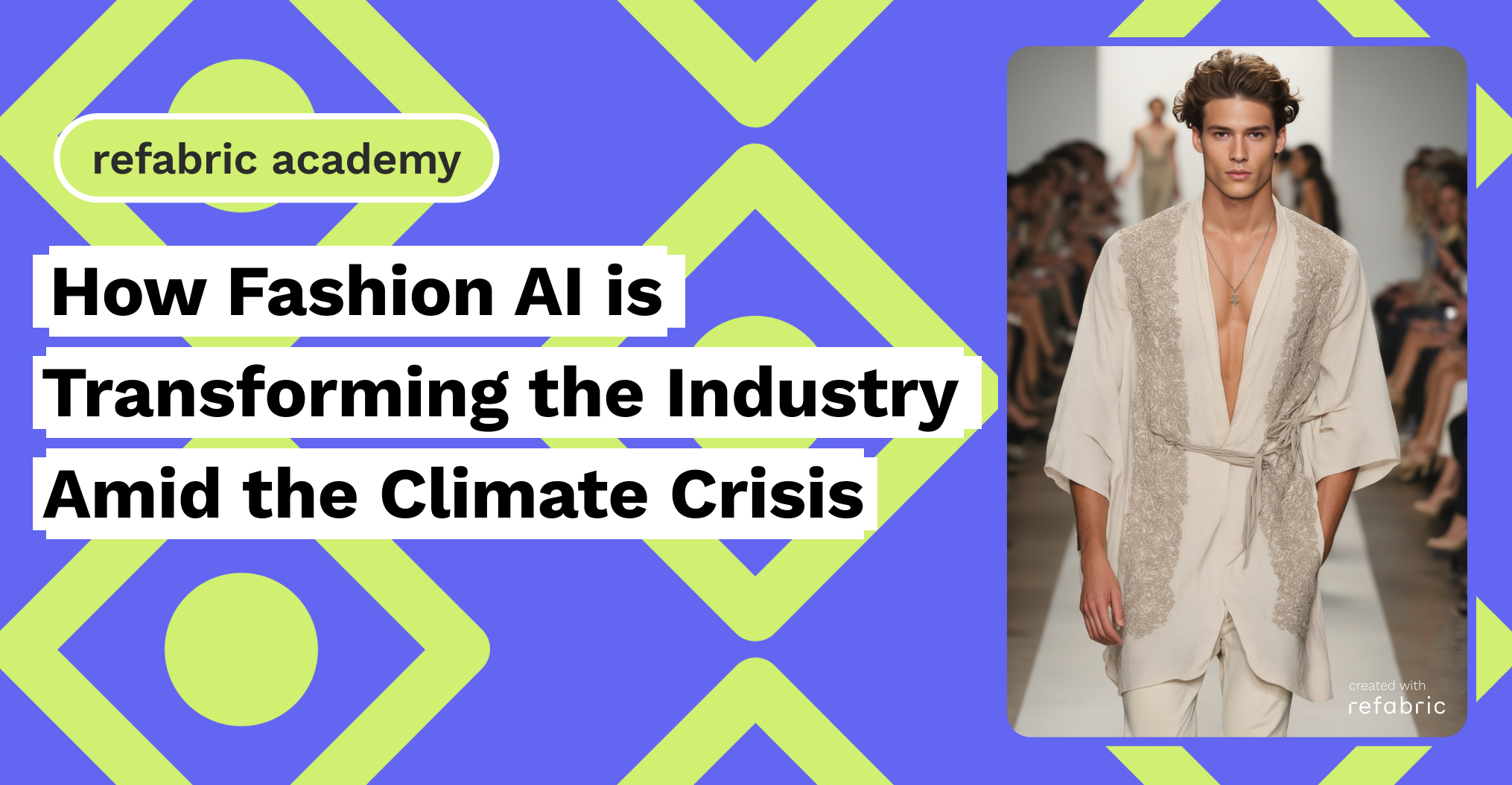With the growing climate crisis, the fashion industry’s greatest concern is failing to contribute to sustainable futures through the use of fashion AI technology. The fashion industry has been creating too much waste due to overproduction and overconsumption caused by miscommunications in the supply chain. Creating garments that will understand the customers better is one of the biggest solutions that could bring more mindful steps to sustainable decisions. Fashion AI design could help understand customer insights, and ongoing trends, and help close the gap between design and execution, designer and customer. But it doesn’t end with this: Fashion AI design can also help create different, bold, unique garments and support designers playing with different textures, colours and fabrics without creating waste.
Reducing Fashion’s Carbon Footprint with Fashion AI
According to a new study working on garment manufacturers in Bangladesh, Fashion’s carbon footprint could be decreased by artificial intelligence (AI) through increased supply chain efficiency. After employing basic AI-powered climate service solutions for at least a year, researchers surveyed 211 managers of Bangladeshi textile manufacturers and discovered that they had increased the use of renewable energy sources, decreased emissions, and improved energy efficiency. Fashion AI solutions could help brands in many different ways, to bring more sustainably conscious clothing.
In the study titled “Unleashing the Power of Artificial Intelligence for Climate Action in Industrial Markets” which was co-authored by an international team of academics, it is found AI framework offers a data-driven strategy to manage climate threats, focusing on the environment, infrastructure, and market effectively and systematically. This is made possible by AI’s exceptional ability to gather, integrate, and understand massive data sets.
Moreover, fashion AI can assist in optimizing production schedules, minimizing waste, and predicting consumer demand more accurately. By analyzing patterns in consumer behavior and market trends, AI enables manufacturers to produce only what is needed, reducing overproduction and excess inventory. This not only lowers the carbon footprint but also aligns with the principles of a circular economy, where resources are used more efficiently and waste is minimized. As a result, the adoption of AI in the fashion industry can lead to more responsible and sustainable manufacturing practices, benefiting both the environment and the economy.
Revolutionizing Online Shopping and Design
Furthermore, the online shopping experience has changed ultimately with new virtual fitting rooms that use AI to present products on customers’ body types and measurements. By uploading a full-body image or creating a digital avatar, Fashion AI could understand how the garment will fit individuals. This helps customers to make more sustainable decisions with new Fashion AI technologies.
Fashion and technology work well together, as forwardness is in the genes of both of these phenomena. Innovation and change have always been a part of fashion, and Fashion AI design is the new breath to catch. It requires labour to design a piece of clothing and to construct it. A single piece can take hours of drafting, stitching, and trial and error. But AI can be useful in the digital world.
By using algorithms to generate exact and customised patterns, these tools help designers save time and effort by eliminating the need for manual computations. The precision and efficiency of AI-generated patterns can help small designers, who frequently have fewer resources at their disposal, freeing them up to concentrate more on the creative parts of the design. Additionally, fashion AI can facilitate rapid prototyping, allowing designers to experiment with new ideas and bring them to market faster. This fusion of technology and creativity not only enhances the design process but also paves the way for more innovative and sustainable fashion solutions.
